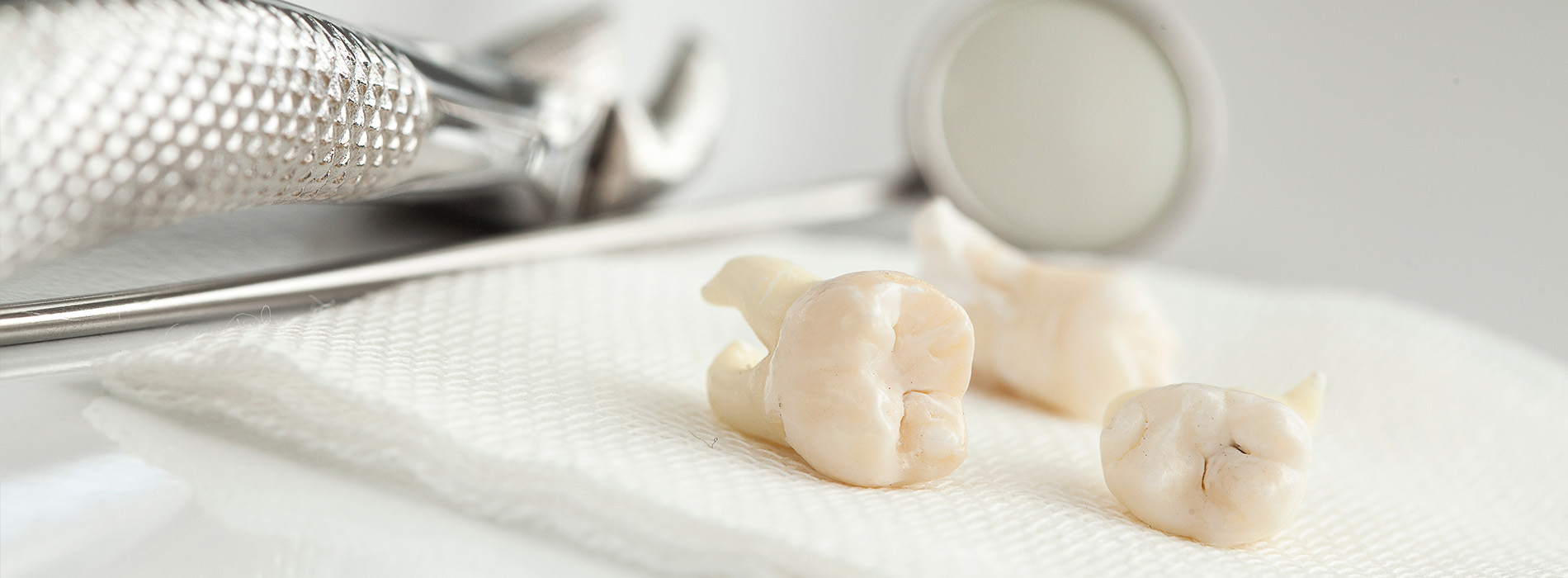
Our Office
2220 W. Armitage Ave
Chicago, IL 60647
Existing Patients: (773) 486-2220
New Patients: (773) 360-5698
Visit Us Online


Maintaining your natural teeth for as long as possible is always the goal in modern dentistry. With advancements in dental materials, restorative techniques, and preventive care, we’re often able to repair and retain teeth that would’ve been deemed unsalvageable just a few decades ago. However, there are still instances when the best decision for your long-term oral and overall health is to remove a tooth.
At our office, tooth extractions are performed with a strong focus on comfort, safety, and long-term planning. Whether a tooth has been severely damaged, is causing overcrowding, or is a problematic wisdom tooth, Dr. Katabi and our experienced team are here to ensure your experience is both physically and emotionally comfortable.
The idea of losing a tooth can be upsetting, especially for adults who’ve never had dental issues before. But there are times when an extraction isn’t just necessary—it’s the healthiest option to protect the integrity of your smile. Removing a compromised tooth can stop the spread of infection, relieve chronic pain, improve bite alignment, or create space for other essential treatments.
In many cases, teeth that are damaged by trauma or decay can be saved with a crown, root canal, or other restorative solution. However, when the structural damage has reached a point where these methods are no longer effective—or the surrounding bone and gum tissue are at risk—it’s better to proceed with an extraction than to preserve a tooth that could endanger your oral health.
For instance, an infected tooth root that does not respond to endodontic therapy (root canal treatment) can act as a source of recurring inflammation, pain, or even systemic infection. Likewise, a tooth with a vertical fracture extending below the gumline often cannot be restored. In these cases, removing the tooth prevents ongoing discomfort and allows the body to heal fully.
Tooth extractions aren’t always related to decay or trauma. In many orthodontic cases, the removal of one or more teeth is a carefully planned part of the treatment process. When teeth are too crowded or misaligned, the available space in the jaw may be insufficient to achieve ideal alignment through braces or clear aligners alone.
By removing select teeth—typically premolars—orthodontists can create the space needed to guide other teeth into their correct positions. This is often necessary in younger patients whose jaws are still developing, but it can also be used in adult orthodontics where significant shifting is required to resolve crowding or bite issues. While it may seem counterintuitive to remove healthy teeth, doing so can result in better long-term function, improved aesthetics, and more stable outcomes.
Wisdom teeth, also known as third molars, are the final set of molars to erupt, typically appearing in the late teens or early twenties. These teeth were once vital for our ancestors, whose diets included more raw plant matter and tougher meats. But with the evolution of our diets and dental development, modern jaws are often too small to accommodate these additional molars.
As a result, wisdom teeth frequently become impacted, meaning they do not erupt fully into the mouth. Impacted wisdom teeth can remain trapped under the gums, push against other teeth, or only partially break through the gumline. These positions create ideal environments for bacteria, leading to recurrent infections, swelling, and pain.
Even when they emerge properly, wisdom teeth can be difficult to clean due to their location at the back of the mouth, increasing the risk of cavities and gum disease. For these reasons, proactive removal of wisdom teeth is often recommended, especially before they cause significant discomfort or damage.
At our practice, we understand that the thought of a tooth extraction can be intimidating for many patients. Whether it’s fear of pain, anxiety about the unknown, or previous negative dental experiences, we’ve seen it all—and we’re here to support you every step of the way.
Before your extraction, Dr. Katabi will perform a thorough evaluation using advanced diagnostic tools, including digital X-rays and 3D imaging when needed. This allows us to precisely assess the tooth’s position, root structure, and surrounding bone. From there, we’ll develop a treatment plan tailored to your needs, including the appropriate anesthesia and sedation options.
Many patients benefit from local anesthesia combined with nitrous oxide (laughing gas) or oral sedation to stay relaxed throughout the procedure. For more complex cases or patients with higher levels of dental anxiety, we may also offer IV sedation administered safely in-office. Our goal is to make your procedure as easy and comfortable as possible—physically, emotionally, and logistically.
Not all extractions are the same. In some cases, particularly with wisdom teeth, broken teeth, or those that haven’t fully erupted, a surgical extraction is necessary. This means a small incision is made in the gum to access the tooth, and in certain cases, the tooth may be sectioned into smaller pieces for easier removal. Surgical extractions are often performed under a deeper level of sedation and require a bit more recovery time than simple extractions.
If your case involves a surgical extraction, we’ll provide you with a detailed explanation of the process, what to expect before and after, and personalized post-operative care instructions to ensure a smooth recovery.
Following an extraction—especially when bone loss is present or a dental implant is being considered—bone grafting may be recommended. This procedure helps preserve or rebuild the jawbone structure, preventing it from shrinking or collapsing in the absence of a tooth root.
Bone grafting materials may be natural or synthetic, and they serve as scaffolding that encourages your own bone to regenerate and strengthen the area over time. This not only maintains the shape of your jaw and face but also creates a stable foundation for any future restorative work, such as dental implants or bridges.
The decision to place a bone graft is often made at the time of the extraction. Dr. Katabi will discuss this option with you in advance and review whether it’s appropriate for your goals, lifestyle, and long-term dental health.
After your procedure, we’ll send you home with clear, step-by-step instructions for aftercare. While some discomfort, swelling, and bleeding are normal during the first 24–48 hours, following our guidelines carefully will help minimize these side effects and promote faster healing.
In most cases, patients are able to return to normal daily activities within a few days. You’ll be advised to eat soft foods, avoid strenuous activity, and not disturb the area (especially with straws, smoking, or vigorous rinsing) during the early healing phase. Pain is usually well managed with over-the-counter medication, though prescriptions may be provided when needed.
If you’re planning to replace the extracted tooth with a dental implant or other restoration, we’ll also discuss your treatment timeline, healing milestones, and any interim options for tooth replacement during the healing period.
Removing a tooth may solve the immediate issue—but what comes next is equally important. A missing tooth can lead to a cascade of effects: nearby teeth may shift, chewing forces become uneven, and the jawbone beneath the empty space can begin to deteriorate over time.
If a replacement is needed, we’ll help you explore your options. Dental implants offer the most natural and permanent solution, restoring both the function and appearance of your smile. Bridges and partial dentures may also be suitable depending on your overall oral health, number of missing teeth, and budget.
Our team will walk you through each option, ensuring your treatment plan aligns with both your current needs and your long-term goals.
Tooth extractions are a major decision, and choosing a provider you can trust is essential. Dr. Katabi combines years of clinical experience with a compassionate, patient-centered approach. We use modern technology to plan and perform your extraction with precision and care, minimizing discomfort and speeding recovery.
From your initial consultation through every follow-up visit, you’ll be supported by a friendly team that treats you like family—not just a name on a chart.
We also offer flexible scheduling and payment options to make care accessible when you need it most.
Whether you’ve been told you need an extraction, are experiencing unexplained pain, or simply want a second opinion, we’re here to help. The earlier we can assess the issue, the more options we can offer to preserve your oral health and comfort.
Call our office today or request a consultation online. Your smile—and your peace of mind—are worth it.

For questions regarding current treatment please call the office 24 hours a day, 7 days a week.